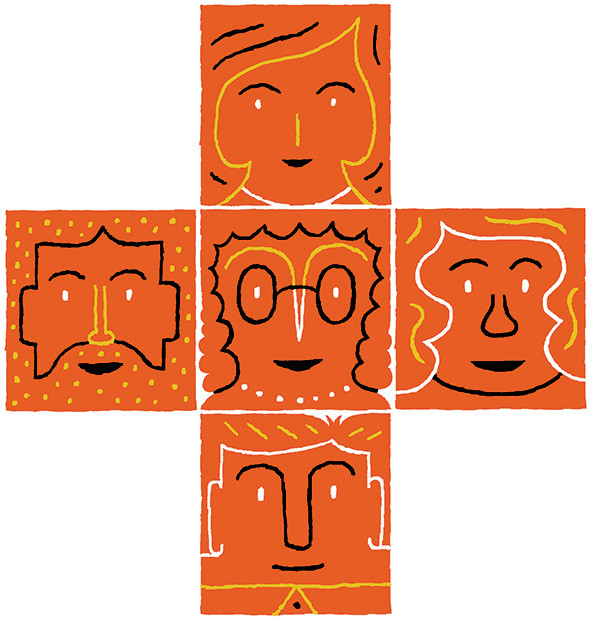 (Illustration by Adam McCauley)
(Illustration by Adam McCauley)
April L. Wright, a professor of management at the University of Queensland in Brisbane, Australia, studies emergency departments. In 2014, while Wright was collecting data for a project on managerial work at public hospitals, the Ebola outbreak began in West Africa. The large urban hospital where Wright’s study was underway, now designated an Ebola response and treatment site, became one of a few places in the country to receive potential cases.
Wright knew the hospital well, and for the first time, she noticed fear creeping into daily operations and diminishing confidence in the emergency department’s ability to assess the risk of Ebola and ensure that sufficient resources were on hand. In Australia, public emergency departments provide universally accessible, high-quality care, often in risky situations involving infectious diseases and violent patients. But the specter of Ebola sparked a crisis of confidence and purpose that threatened to undermine the emergency department’s response.
Wright teamed up with Alan D. Meyer, a professor of management at the University of Oregon’s Lundquist College of Business; Trish Reay, a professor at the University of Alberta’s Department of Strategy, Entrepreneurship, and Management; and Jonathan Staggs, a professor of business at Christian Heritage College in Brisbane, Australia, to investigate how frontline professionals, who are obligated to serve everyone who comes through their doors, balanced risk, moral emotions, and fear during a global health emergency. Their research has attracted attention and praise for its implications for managing the COVID-19 pandemic.
“At the time, I couldn’t quite work out what was going on,” Wright says, recalling the 2014 crisis. “It took a few years after the event to develop a theoretical framework to really understand what happened.” Sifting through field notes, ethnographic observations, and interviews, Wright and her collaborators set out to analyze the intersection of emotions and institutional work.
Their study introduces a new concept—“places of social inclusion”—to refer to any setting that is institutionally “endowed by a society or community with material resources, meaning, and values” to serve all citizens and fulfill essential human needs, such as public parks, libraries, and schools.
“This emergency department and the staff within it were always mindful of their role to serve as a place of social inclusion, a safe place for all Australians,” Wright says. In an epidemic, however, “the challenge is that social inclusion carries a risk, and what is required is that the people who work in the emergency department have a strong commitment and identity above and beyond their professional identity.”
The Ebola crisis exposed the precarity of this particular place of social inclusion, even when its inclusive character was constantly reinforced at both the state and societal levels. The authors found that consistent effort and support were required to maintain the emergency department’s mission. Social norms and workplace regulations were not enough to ensure that frontline health professionals remained motivated to enact inclusion on the ground.
Mitigating risk and managing fear during a crisis depended on the ability of doctors and nurses to adopt an identity as “custodians.” This identity drove them to “uphold the highest ideals of a public emergency department as a place of social inclusion,” the authors found. They describe how workers managed tensions caused by resource limitations and risk by relying on practices of resource rationing and resource enabling, harm mitigation, and harm avoidance.
“A key mechanism in resolving these contests and bringing fear under control was custodians’ moral emotions,” the paper explains. Redirecting fear and self-conscious moral emotions to courage and care demanded a steady stream of information, training, equipment, and resources. Only then did the emergency department operate with full confidence and purpose as an inclusive, safe, and universally accessible place.
“This study suggests a need to think about how custodians, or those who feel a responsibility toward maintaining social inclusion, work to ensure inclusiveness despite the risks and threats,” says Ann Langley, a professor of management at HEC Montréal. “Spaces of social inclusion are fragile institutions and could break down under pressure. They require ongoing effort by people who feel responsibility to them to ensure their maintenance.”
While this study imparts lessons on how to support frontline health workers and sustain emergency departments during the COVID-19 pandemic, it has implications for other settings where open access and inclusiveness are fundamental values. “What COVID-19 did was threaten places of social inclusion, and not just in health-care organizations,” Langley says. “Thinking about where our society’s spaces of social inclusion are, and how they are and can be maintained, is really important for the maintenance of a democratic society.”
April L. Wright, Alan D. Meyer, Trish Reay, and Jonathan Staggs, “Maintaining Places of Social Inclusion: Ebola and the Emergency Department,” Administrative Science Quarterly vol. 66, no. 1, 2021, pp. 42-85.
Support SSIR’s coverage of cross-sector solutions to global challenges.
Help us further the reach of innovative ideas. Donate today.
Read more stories by Daniela Blei.

